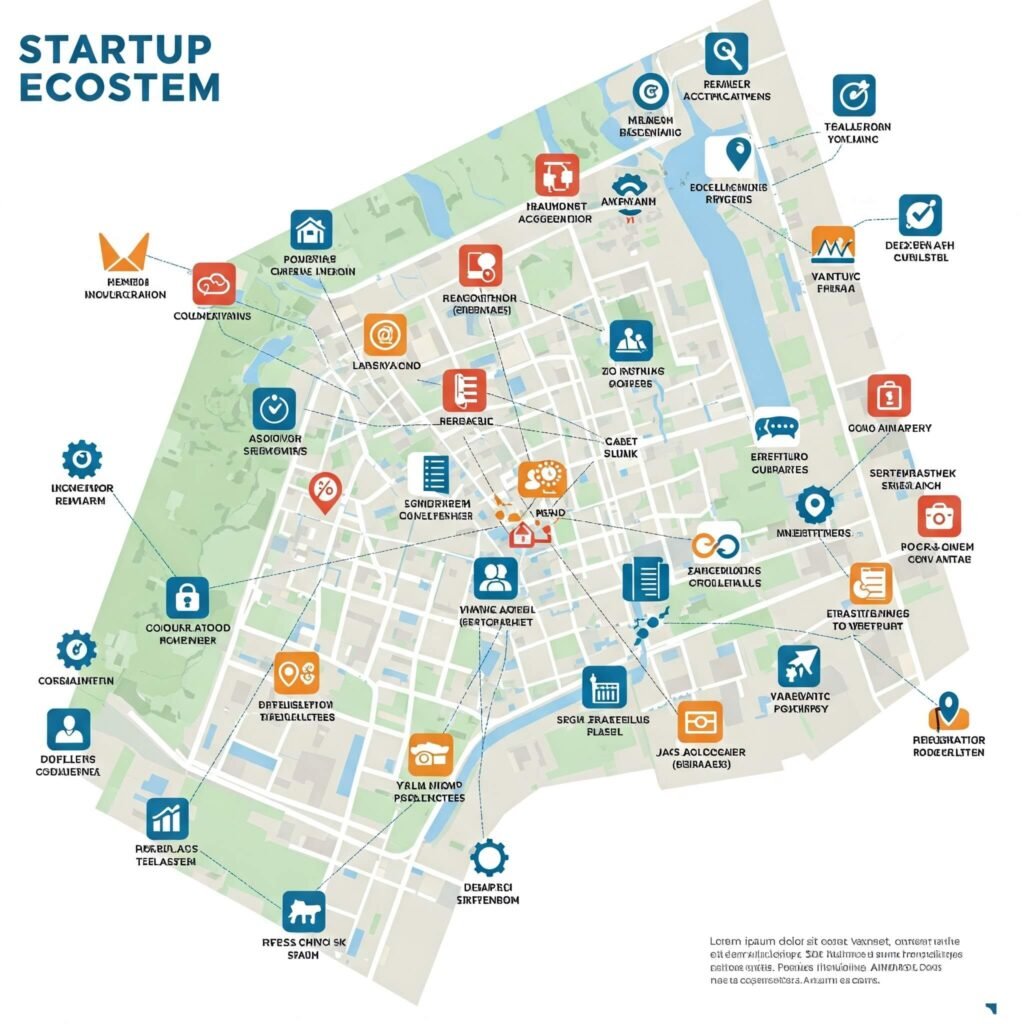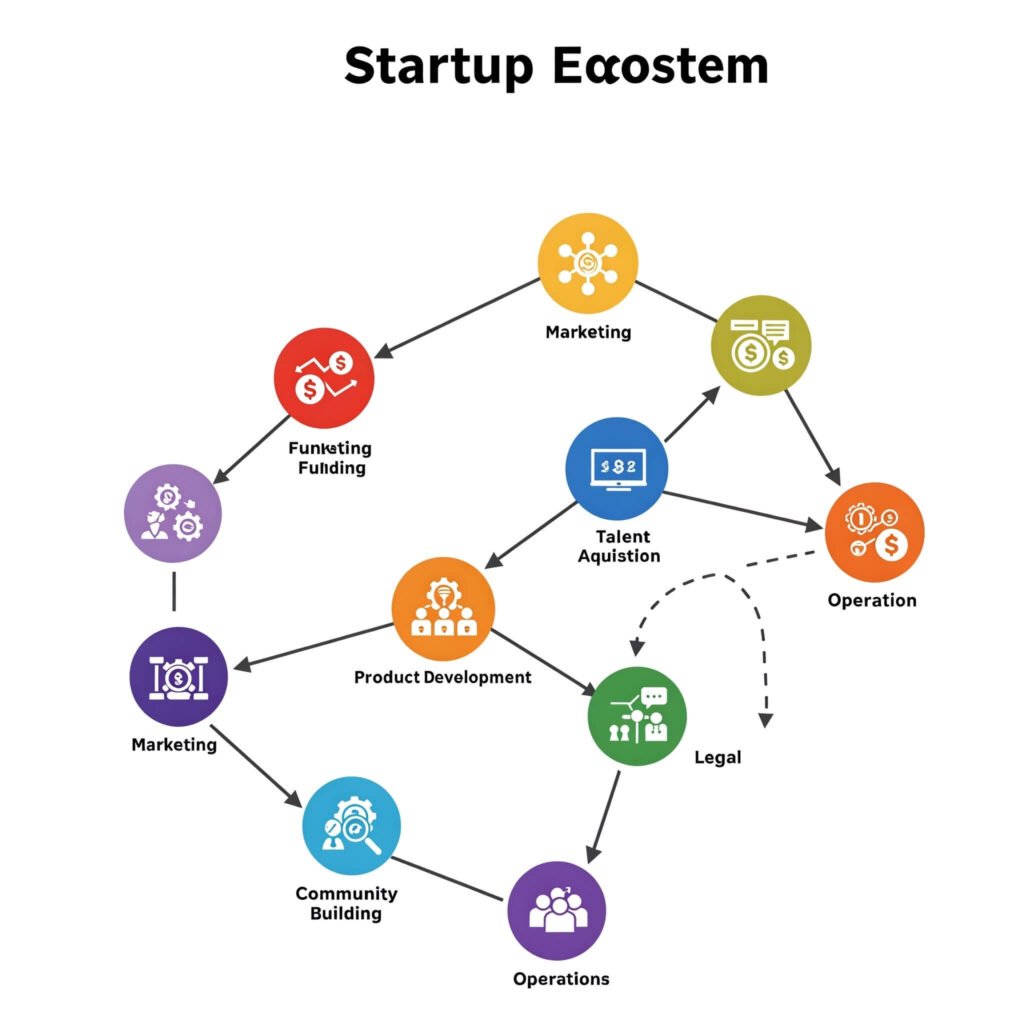Hey there, aspiring founder, innovator, or simply curious mind! You’ve likely heard the buzzword “startup ecosystem” and wondered what it truly means. Indeed, you’re not alone. Think of it as a vibrant, interconnected web of resources, people, and organizations that nurture and support the growth of new businesses. Understanding what a startup ecosystem is and, even more importantly, how to plug into one can be a game-changer for your entrepreneurial aspirations. So, let’s dive in!
Decoding the Startup Ecosystem: What Exactly Is It?
At its core, a startup ecosystem is a geographic area where various elements interact to foster the creation and scaling of startups. Specifically, these elements include:
- Talent: Skilled individuals with diverse expertise, ranging from tech developers and marketers to business strategists and designers.
- Capital: Funding sources such as angel investors, venture capitalists, and government grants.
- Mentorship and Support: Experienced entrepreneurs, advisors, and incubators offering guidance and resources.
- Infrastructure: Co-working spaces, accelerators, research institutions, and reliable internet connectivity.
- Government and Policies: Regulations, incentives, and initiatives that support innovation and entrepreneurship.
- Culture: A mindset that embraces risk-taking, collaboration, and a “can-do” attitude.
- Market Access: Early adopters, potential customers, and established businesses willing to partner with startups.
- Knowledge and Networking: Universities, industry events, and online communities that facilitate learning and connections.
For instance, think of Silicon Valley, Bangalore, or Tel Aviv – these are prime examples of thriving startup ecosystems where these elements are strongly present and interconnected.
Why Plugging Into a Startup Ecosystem Matters
Being part of a vibrant startup ecosystem offers numerous advantages. Firstly, connecting with investors who understand the startup landscape significantly increases your chances of securing crucial capital. Furthermore, you’ll be in a pool of skilled professionals actively seeking opportunities in innovative ventures. Moreover, experienced individuals can provide invaluable advice, helping you avoid common pitfalls and accelerate your growth. In addition, you’ll have countless chances to connect with potential co-founders, partners, customers, and industry influencers. Beyond that, being surrounded by other ambitious individuals and successful startups can fuel your motivation and provide valuable insights. Finally, early access to a network of potential customers and feedback can help you refine your product or service.
How to Plug Into a Startup Ecosystem: Actionable Steps
Therefore, how do you become an active part of a startup ecosystem? Here are some practical strategies:
- Research Your Local Ecosystem:
- Identify the key players: incubators, accelerators, venture capital firms, angel investor networks, universities, and relevant industry associations.
- Explore online resources and directories specific to your region’s startup scene.

- Attend Industry Events and Meetups:
- Look for conferences, workshops, hackathons, and networking events related to your industry or the broader startup community.
- Actively participate, introduce yourself, and exchange contact information.
- [Outbound Reference Link: Link to a popular platform for finding local tech events, e.g., Meetup.com]
- Join Online Communities and Forums:
- Engage in relevant LinkedIn groups, Slack channels, and online forums focused on startups and entrepreneurship in your area.
- Share your insights, ask questions, and offer help to others.
- Connect with Mentors and Advisors:
- Seek out experienced entrepreneurs or industry experts who can provide guidance and support.
- Attend mentorship programs offered by incubators or accelerators.
- [Outbound Reference Link: Link to a resource on finding mentors for startups, e.g., SCORE]
- Utilize Co-working Spaces and Incubators:
- These environments provide a physical hub for networking, collaboration, and access to resources.
- Many offer workshops, mentorship programs, and connections to investors.

- Engage with Universities and Research Institutions:
- Explore potential collaborations, access to talent, and licensing opportunities for innovative technologies.
- Attend university-hosted entrepreneurship events.
- Seek Feedback and Offer Help:
- Share your ideas and prototypes with the community to get valuable feedback.
- Offer your skills and expertise to help other startups in the ecosystem.
- Stay Active and Persistent:
- Building connections and integrating into a startup ecosystem takes time and effort.
- Continuously engage, follow up with contacts, and stay informed about local developments.
The Power of Collaboration in a Startup Ecosystem
A thriving startup ecosystem is characterized by a strong sense of collaboration. Indeed, startups often partner with each other, share resources, and learn from each other’s experiences. This collaborative spirit fosters innovation and accelerates growth for the entire ecosystem.
Key Takeaways for Plugging Into a Startup Ecosystem
- To begin with, be proactive: Don’t wait for opportunities to come to you; actively seek them out.
- Furthermore, be genuine: Focus on building meaningful relationships rather than just collecting contacts.
- Moreover, be helpful: Offer value to the community, and you’ll find others are more likely to reciprocate.
- Finally, be patient: Building your network and integrating into the ecosystem takes time.
In conclusion, by understanding what a startup ecosystem is and actively engaging with its various components, you significantly increase your chances of success in the challenging yet rewarding world of entrepreneurship. Therefore, get out there, connect, and become a vital part of your local startup ecosystem!


